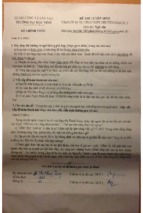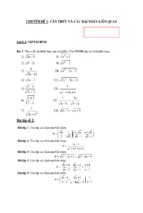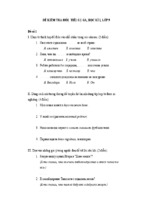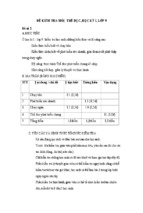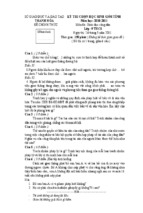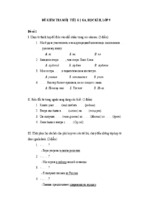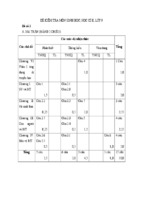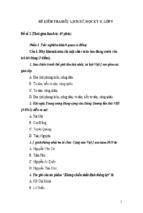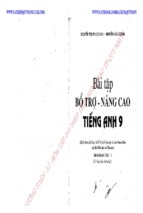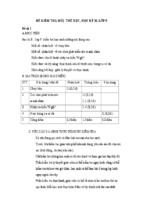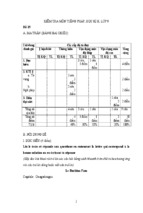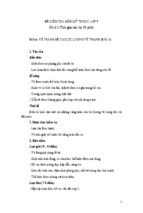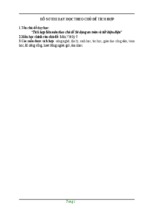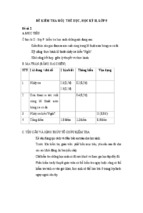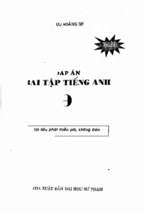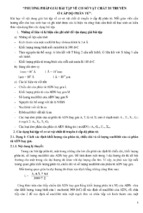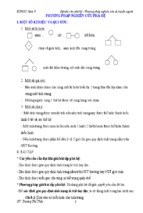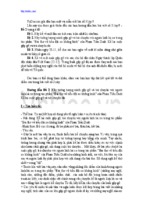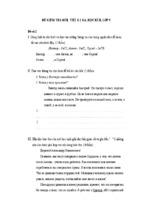New 14
20
for
Cambridge
IGCSE
Physics
®
Third Edition
9781444176421_FM_00.indd 1
20/06/14 7:29 AM
This page intentionally left blank
New 14
0
or 2
f
Cambridge
IGCSE
Physics
®
Third Edition
Tom Duncan
and Heather Kennett
iii
9781444176421_FM_00.indd 3
20/06/14 7:29 AM
® IGCSE is the registered trademark of Cambridge International Examinations. The questions, example answers, marks
awarded and/or comments that appear in this book/CD were written by the authors. In examination the way marks
would be awarded to answers like these may be different.
Past examination questions reproduced by permission of Cambridge International Examinations.
Cambridge International Examinations bears no responsibility for the example answers to questions taken from its past
question papers which are contained in this publication.
Although every effort has been made to ensure that website addresses are correct at time of going to press, Hodder
Education cannot be held responsible for the content of any website mentioned in this book. It is sometimes possible to
find a relocated web page by typing in the address of the home page for a website in the URL window of your browser.
Hachette UK’s policy is to use papers that are natural, renewable and recyclable products and made from wood grown in
sustainable forests. The logging and manufacturing processes are expected to conform to the environmental regulations
of the country of origin.
Orders: please contact Bookpoint Ltd, 130 Milton Park, Abingdon, Oxon OX14 4SB. Telephone: (44) 01235 827720.
Fax: (44) 01235 400454. Lines are open 9.00–5.00, Monday to Saturday, with a 24-hour message answering service.
Visit our website at www.hoddereducation.com
© Tom Duncan and Heather Kennett 2002
First published in 2002 by
Hodder Education, an Hachette UK Company,
338 Euston Road
London NW1 3BH
This third edition published 2014
Impression number 5 4 3 2 1
Year
2018 2017 2016 2015 2014
All rights reserved. Apart from any use permitted under UK copyright law, no part of this publication may be reproduced
or transmitted in any form or by any means, electronic or mechanical, including photocopying and recording, or held
within any information storage and retrieval system, without permission in writing from the publisher or under licence
from the Copyright Licensing Agency Limited. Further details of such licences (for reprographic reproduction) may be
obtained from the Copyright Licensing Agency Limited, Saffron House, 6–10 Kirby Street, London EC1N 8TS.
Cover photo © robertkoczera – Fotolia
Illustrations by Fakenham Prepress Solutions, Wearset and Integra Software Services Pvt. Ltd.
Typeset in 11/13pt ITC Galliard Std by Integra Software Services Pvt. Ltd., Pondicherry, India
Printed and bound in Italy.
A catalogue record for this title is available from the British Library
ISBN 978 1 4441 76421
9781444176421_FM_00.indd 4
20/06/14 7:29 AM
Contents
Preface vii
Physics and technology
viii
Scientific enquiry
x
Section 1 General physics
Measurements and motion
1 Measurements
2 Speed, velocity and acceleration
3 Graphs of equations
4 Falling bodies
5 Density
Forces and momentum
6 Weight and stretching
7 Adding forces
8 Force and acceleration
9 Circular motion
10 Moments and levers
11 Centres of mass
12 Momentum
Energy, work, power and pressure
13 Energy transfer
14 Kinetic and potential energy
15 Energy sources
16 Pressure and liquid pressure
2
9
13
17
21
24
27
30
35
39
43
47
50
56
60
66
Section 2 Thermal physics
Simple kinetic molecular model of matter
17 Molecules
18 The gas laws
Thermal properties and temperature
19 Expansion of solids, liquids and gases
20 Thermometers
21 Specific heat capacity
22 Specific latent heat
Thermal processes
23 Conduction and convection
24 Radiation
72
76
81
85
88
91
97
102
v
9781444176421_FM_00.indd 5
20/06/14 7:29 AM
Section 3 Properties of waves
General wave properties
25 Mechanical waves
Light
26 Light rays
27 Reflection of light
28 Plane mirrors
29 Refraction of light
30 Total internal reflection
31 Lenses
32 Electromagnetic radiation
Sound
33 Sound waves
106
113
116
119
122
126
129
135
140
Section 4 Electricity and magnetism
Simple phenomena of magnetism
34 Magnetic fields
Electrical quantities and circuits
35 Static electricity
36 Electric current
37 Potential difference
38 Resistance
39 Capacitors
40 Electric power
41 Electronic systems
42 Digital electronics
Electromagnetic effects
43 Generators
44 Transformers
45 Electromagnets
46 Electric motors
47 Electric meters
48 Electrons
146
150
157
162
167
174
177
185
193
199
204
209
215
219
222
Section 5 Atomic physics
49 Radioactivity
50 Atomic structure
230
238
Revision questions
Cambridge IGCSE exam questions
Mathematics for physics
Further experimental investigations
Practical test questions
Alternative to practical test questions
245
251
279
283
285
291
Answers 299
Index 308
Photo acknowledgements
315
vi
9781444176421_FM_00.indd 6
20/06/14 7:29 AM
Preface
IGCSE Physics Third Edition aims to provide an
up-to-date and comprehensive coverage of the Core
and Extended curriculum in Physics specified in
the current Cambridge International Examinations
IGCSE syllabus.
As you read through the book, you will notice four
sorts of shaded area in the text.
Material highlighted in green is for the Cambridge
IGCSE Extended curriculum.
Areas highlighted in yellow contain material that
is not part of the Cambridge IGCSE syllabus. It is
extension work and will not be examined.
The book has been completely restructured to
align chapters and sections with the order of the
IGCSE syllabus. A new chapter on momentum has
been included and the checklists at the end of each
chapter are all aligned more closely with the syllabus
requirements. New questions from recent exam
papers are included at the end of the book in the
sections entitled Cambridge IGCSE exam questions,
Practical test questions and Alternative to practical test
questions. These can be used for quick comprehensive
revision before exams.
The accompanying Revision CD-ROM provides
invaluable exam preparation and practice. Interactive
tests, organised by syllabus topic, cover both the
Core and Extended curriculum.
T.D. and H.K.
Areas highlighted in blue contain important facts.
Questions are highlighted by a box like this.
vii
9781444176421_FM_00.indd 7
20/06/14 7:29 AM
Physics and technology
Physicists explore the Universe. Their investigations
range from particles that are smaller than atoms to
stars that are millions and millions of kilometres away,
as shown in Figures 1a and 1b.
As well as having to find the facts by observation
and experiment, physicists also must try to discover
the laws that summarise these facts (often as
mathematical equations). They then have to
make sense of the laws by thinking up and testing
theories (thought-models) to explain the laws. The
reward, apart from satisfied curiosity, is a better
understanding of the physical world. Engineers
and technologists use physics to solve practical
problems for the benefit of people, though, in
solving them, social, environmental and other
problems may arise.
In this book we will study the behaviour of matter
(the stuff things are made of) and the different kinds
of energy (such as light, sound, heat, electricity).
We will also consider the applications of physics in
the home, in transport, medicine, research, industry,
Figure 1b The many millions of stars in the Universe, of which the
Sun is just one, are grouped in huge galaxies. This photograph of two
interacting spiral galaxies was taken with the Hubble Space Telescope.
This orbiting telescope is enabling astronomers to tackle one of the most
energy production and electronics. Figure 2 shows
some examples.
Mathematics is an essential tool of physics and a
‘reference section’ for some of the basic mathematics
is given at the end of the book along with suggested
methods for solving physics problems.
Figure 1a This image, produced by a scanning tunnelling microscope,
shows an aggregate of gold just three atoms thick on a graphite
substrate. Individual graphite (carbon) atoms are shown as green.
fundamental questions in science, i.e. the age and scale of the Universe,
by giving much more detailed information about individual stars than is
possible with ground-based telescopes.
viii
9781444176421_FM_00.indd 8
20/06/14 7:29 AM
Physics and technology
Figure 2a The modern technology of laser surgery enables very
delicate operations to be performed. Here the surgeon is removing
thin sheets of tissue from the surface of the patient’s cornea, in
order to alter its shape and correct severe short-sightedness.
Figure 2c The manned exploration of space is such an expensive
operation that international co-operation is seen as the way forward. This
is the International Space Station, built module by module in orbit around
the Earth. It is operated as a joint venture by the USA and Russia.
Figure 2b Mobile phones provide us with the convenience
of instant communication wherever we are – but does the
electromagnetic radiation they use pose a hidden risk to our
health?
Figure 2d In the search for alternative energy sources, ‘wind farms’ of
20 to 100 wind turbines have been set up in suitable locations, such as
this one in North Wales, to generate at least enough electricity for the
local community.
ix
9781444176421_FM_00.indd 9
20/06/14 7:29 AM
Scientific enquiry
During your course you will have to carry out a few
experiments and investigations aimed at encouraging
you to develop some of the skills and abilities that
scientists use to solve real-life problems.
Simple experiments may be designed to measure,
for example, the temperature of a liquid or the
electric current in a circuit. Longer investigations
may be designed to establish or verify a relationship
between two or more physical quantities.
Investigations may arise from the topic you are
currently studying in class, or your teacher may
provide you with suggestions to choose from, or you
may have your own ideas. However an investigation
arises, it will probably require at least one hour of
laboratory time, but often longer, and will involve the
following four aspects.
1 Planning how you are going to set about finding
answers to the questions the problem poses. Making
predictions and hypotheses (informed guesses) may
help you to focus on what is required at this stage.
2 Obtaining the necessary experimental data
safely and accurately. You will have to decide
what equipment is needed, what observations
and measurements have to be made and what
variable quantities need to be manipulated. Do not
dismantle the equipment until you have completed
your analysis and you are sure you do not need to
repeat any of the measurements!
3 Presenting and interpreting the evidence in a way
that enables any relationships between quantities to
be established.
4 Considering and evaluating the evidence by
drawing conclusions, assessing the reliability of data
and making comparisons with what was expected.
Figure 3 Girls from Copthall School, London, with their winning entry
for a contest to investigate, design and build the most efficient, elegant
and cost-effective windmill.
A written report of the investigation would normally
be made. This should include:
aim of the work.
l A list of all items of apparatus used and a record of
the smallest division of the scale of each measuring
device. For example, the smallest division on a
metre rule is 1 mm. The scale of the rule can be
read to the nearest mm. So when used to measure
a length of 100 mm (0.1 m), the length is measured
to the nearest 1 mm, the degree of accuracy of the
measurement being 1 part in 100. When used to
measure 10 mm (0.01 m), the degree of accuracy
of the measurement is 1 part in 10. A thermometer
is calibrated in degrees Celsius and may be read to
the nearest 1 °C. A temperature may be measured
to the nearest 1 °C. So when used to measure a
temperature of 20 °C, the degree of accuracy is
1 part in 20 (this is 5 parts in 100).
l Details of procedures, observations and
measurements made. A clearly labelled diagram
will be helpful here; any difficulties encountered
or precautions taken to achieve accuracy should be
mentioned.
l Presentation of results and calculations. If several
measurements of a quantity are made, draw up a
table in which to record your results. Use the column
headings, or start of rows, to name the measurement
and state its unit; for example ‘Mass of load/kg’.
Repeat the measurement of each observation;
record each value in your table, then calculate an
average value. Numerical values should be given to
the number of significant figures appropriate to the
measuring device (see Chapter 1).
If you decide to make a graph of your results you
will need at least eight data points taken over as
large a range as possible; be sure to label each axis
of a graph with the name and unit of the quantity
being plotted (see Chapter 3).
l Conclusions which can be drawn from the
evidence. These can take the form of a numerical
value (and unit), the statement of a known law, a
relationship between two quantities or a statement
related to the aim of the experiment (sometimes
experiments do not achieve the intended objective).
l An evaluation and discussion of the findings which
should include:
(i) a comparison with expected outcomes,
(ii) � comment on the reliability of the readings,
a
especially in relation to the scale of the
measuring apparatus,
l The
x
9781444176421_FM_00.indd 10
20/06/14 7:29 AM
Ideas and evidence in science
(iii) � reference to any apparatus that was
a
unsuitable for the experiment,
(iv) � comment on any graph drawn, its shape and
a
whether the graph points lie on the line,
(v) � comment on any trend in the readings,
a
usually shown by the graph,
(vi) �
how the experiment might be modified to
give more reliable results, for example in an
electrical experiment by using an ammeter
with a more appropriate scale.
●● Suggestions for
investigations
Investigations which extend the practical work or
theory covered in some chapters are listed below.
The section Further experimental investigations on
p. 283 details how you can carry out some of these
investigations.
1 Pitch of a note from a vibrating wire
(Chapter 33).
2 Stretching of a rubber band (Chapter 6 and
Further experimental investigations, p. 283).
3 Stretching of a copper wire – wear safety glasses
(Chapter 6).
4 Toppling (Further experimental investigations,
p. 283).
5 Friction – factors affecting (Chapter 7).
6 Energy values from burning fuel, e.g. a firelighter
(Chapter 13).
7 Model wind turbine design (Chapter 15).
8 Speed of a bicycle and its stopping distance
(Chapter 14).
9 Circular motion using a bung on a string
(Chapter 9).
10 Heat loss using different insulating materials
(Chapter 23).
11 Cooling and evaporation (Further experimental
investigations, pp. 283–84).
12 Variation of the resistance of a thermistor with
temperature (Chapter 38).
13 Variation of the resistance of a wire with
length (Further experimental investigations,
p. 284).
14 Heating effect of an electric current (Chapter 36).
15 Strength of an electromagnet (Chapter 45).
16 Efficiency of an electric motor (Chapter 46).
●● Ideas and evidence in
science
In some of the investigations you perform in the
school laboratory, you may find that you do not
interpret your data in the same way as your friends
do; perhaps you will argue with them as to the best
way to explain your results and try to convince them
that your interpretation is right. Scientific controversy
frequently arises through people interpreting
evidence differently.
Observations of the heavens led the ancient Greek
philosophers to believe that the Earth was at the
centre of the planetary system, but a complex system
of rotation was needed to match observations of the
apparent movement of the planets across the sky. In
1543 Nicolaus Copernicus made the radical suggestion
that all the planets revolved not around the Earth
but around the Sun. (His book On the Revolutions of
the Celestial Spheres gave us the modern usage of the
word ‘revolution’.) It took time for his ideas to gain
acceptance. The careful astronomical observations
of planetary motion documented by Tycho Brahe
were studied by Johannes Kepler, who realised that
the data could be explained if the planets moved
in elliptical paths (not circular) with the Sun at one
focus. Galileo’s observations of the moons of Jupiter
with the newly invented telescope led him to support
this ‘Copernican view’ and to be imprisoned by the
Catholic Church in 1633 for disseminating heretical
views. About 50 years later, Isaac Newton introduced
the idea of gravity and was able to explain the motion
of all bodies, whether on Earth or in the heavens,
which led to full acceptance of the Copernican
model. Newton’s mechanics were refined further at
the beginning of the 20th century when Einstein
developed his theories of relativity. Even today, data
from the Hubble Space Telescope is providing new
evidence which confirms Einstein’s ideas.
Many other scientific theories have had to wait
for new data, technological inventions, or time and
the right social and intellectual climate for them to
become accepted. In the field of health and medicine,
for example, because cancer takes a long time to
develop it was several years before people recognised
that X-rays and radioactive materials could be
dangerous (Chapter 49).
xi
9781444176421_FM_00.indd 11
20/06/14 7:29 AM
Scientific enquiry
At the beginning of the 20th century scientists
were trying to reconcile the wave theory and the
particle theory of light by means of the new ideas of
quantum mechanics.
Today we are collecting evidence on possible
health risks from microwaves used in mobile phone
networks. The cheapness and popularity of mobile
phones may make the public and manufacturers
reluctant to accept adverse findings, even if risks are
made widely known in the press and on television.
Although scientists can provide evidence and
evaluation of that evidence, there may still be room
for controversy and a reluctance to accept scientific
findings, particularly if there are vested social or
economic interests to contend with. This is most
clearly shown today in the issue of global warming.
xii
9781444176421_FM_00.indd 12
20/06/14 7:29 AM
Section
1
General physics
Chapters
Measurements and motion
1 Measurements
2 Speed, velocity and acceleration
3 Graphs of equations
4 Falling bodies
5 Density
Forces and momentum
6 Weight and stretching
7 Adding forces
9781444176421_Section_01.indd 1
8
9
10
11
12
Force and acceleration
Circular motion
Moments and levers
Centres of mass
Momentum
Energy, work, power and pressure
13 Energy transfer
14 Kinetic and potential energy
15 Energy sources
16 Pressure and liquid pressure
20/06/14 7:30 AM
1 �Measurements
l
l Mass
l
Units and basic quantities
Powers of ten shorthand
l Length
l Significant figures
l Area
l Volume
l Time
●● Units and basic
quantities
Before a measurement can be made, a standard or
unit must be chosen. The size of the quantity to be
measured is then found with an instrument having a
scale marked in the unit.
Three basic quantities we measure in physics are
length, mass and time. Units for other quantities
are based on them. The SI (Système International
d’Unités) system is a set of metric units now used in
many countries. It is a decimal system in which units
are divided or multiplied by 10 to give smaller or
larger units.
l
Systematic errors
Vernier scales and micrometers
l Practical work: Period of a simple pendulum
l
4000 = 4 × 10 × 10 × 10
400 = 4 × 10 × 10
40 = 4 × 10
4=4×1
0.4 = 4/10 = 4/101
0.04 = 4/100 = 4/102
0.004 = 4/1000 = 4/103
= 4 × 103
= 4 × 102
= 4 × 101
= 4 × 100
= 4 × 10−1
= 4 × 10−2
= 4 × 10−3
The small figures 1, 2, 3, etc., are called powers of
ten. The power shows how many times the number
has to be multiplied by 10 if the power is greater than
0 or divided by 10 if the power is less than 0. Note
that 1 is written as 100.
This way of writing numbers is called standard
notation.
●● Length
The unit of length is the metre (m) and is the
distance travelled by light in a vacuum during
a specific time interval. At one time it was the
distance between two marks on a certain metal bar.
Submultiples are:
1 decimetre (dm)
1 centimetre (cm)
1 millimetre (mm)
1 micrometre (µm)
1 nanometre (nm)
Figure 1.1 Measuring instruments on the flight deck of a passenger jet
provide the crew with information about the performance of the aircraft.
●● Powers of ten shorthand
This is a neat way of writing numbers, especially if they are
large or small. The example below shows how it works.
= 10−1 m
= 10−2 m
= 10−3 m
= 10−6 m
= 10−9 m
A multiple for large distances is
1 kilometre (km) = 103 m ( 5 mile approx.)
8
Many length measurements are made with rulers;
the correct way to read one is shown in Figure 1.2.
The reading is 76 mm or 7.6 cm. Your eye must be
directly over the mark on the scale or the thickness of
the ruler causes a parallax error.
2
9781444176421_Section_01.indd 2
20/06/14 7:30 AM
Area
wrong
correct
If a number is expressed in standard notation, the
number of significant figures is the number of digits
before the power of ten. For example, 2.73 × 103 has
three significant figures.
●● Area
80
70
The area of the square in Figure 1.3a with sides 1 cm
long is 1 square centimetre (1 cm2). In Figure 1.3b
the rectangle measures 4 cm by 3 cm and has an area
of 4 × 3 = 12 cm2 since it has the same area as twelve
squares each of area 1 cm2. The area of a square or
rectangle is given by
area = length × breadth
object
Figure 1.2 The correct way to measure with a ruler
To obtain an average value for a small distance,
multiples can be measured. For example, in ripple
tank experiments (Chapter 25) measure the distance
occupied by five waves, then divide by 5 to obtain the
average wavelength.
●● Significant figures
Every measurement of a quantity is an attempt to
find its true value and is subject to errors arising from
limitations of the apparatus and the experimenter.
The number of figures, called significant figures,
given for a measurement indicates how accurate we
think it is and more figures should not be given than
is justified.
For example, a value of 4.5 for a measurement has
two significant figures; 0.0385 has three significant
figures, 3 being the most significant and 5 the least,
i.e. it is the one we are least sure about since it might
be 4 or it might be 6. Perhaps it had to be estimated
by the experimenter because the reading was between
two marks on a scale.
When doing a calculation your answer should
have the same number of significant figures as the
measurements used in the calculation. For example,
if your calculator gave an answer of 3.4185062, this
would be written as 3.4 if the measurements had
two significant figures. It would be written as 3.42
for three significant figures. Note that in deciding
the least significant figure you look at the next figure
to the right. If it is less than 5 you leave the least
significant figure as it is (hence 3.41 becomes 3.4) but
if it equals or is greater than 5 you increase the least
significant figure by 1 (hence 3.418 becomes 3.42).
The SI unit of area is the square metre (m2) which is
the area of a square with sides 1 m long. Note that
1 m2 = 10−4 m2
1 cm2 = 1 m × 1 m =
100
100
10 000
1 cm
a
1 cm
3 cm
b
4 cm
Figure 1.3
Sometimes we need to know the area of a triangle
(Chapter 3). It is given by
area of triangle =
1
2
× base × height
1
2
1
2
× AB × AC
1
2
1
2
× PQ × SR
For example in Figure 1.4
area ∆ABC =
=
and
area ∆PQR =
=
C
× 4 cm × 6 cm = 12 cm2
× 5 cm × 4 cm = 10 cm2
R
6 cm
4 cm
90°
A
4 cm
B
P
S
5 cm
Q
Figure 1.4
3
9781444176421_Section_01.indd 3
20/06/14 7:31 AM
1
Measurements
The area of a circle of radius r is πr2 where
π = 22/7 or 3.14; its circumference is 2πr.
●● Volume
Volume is the amount of space occupied. The unit of
volume is the cubic metre (m3) but as this is rather
large, for most purposes the cubic centimetre (cm3)
is used. The volume of a cube with 1 cm edges is
1 cm3. Note that
1 cm3 = 1 m × 1 m × 1 m
100
100
100
=
4
The volume of a sphere of radius r is 3 πr3 and that
of a cylinder of radius r and height h is πr2h.
The volume of a liquid may be obtained by
pouring it into a measuring cylinder, Figure 1.6a.
A known volume can be run off accurately from a
burette, Figure 1.6b. When making a reading both
vessels must be upright and your eye must be level
with the bottom of the curved liquid surface, i.e. the
meniscus. The meniscus formed by mercury is curved
oppositely to that of other liquids and the top is read.
Liquid volumes are also expressed in litres (l);
1 litre = 1000 cm3 = 1 dm3. One millilitre (1 ml) = 1 cm3.
1
m3 = 10−6 m3
1000000
For a regularly shaped object such as a rectangular
block, Figure 1.5 shows that
volume = length × breadth × height
meniscus
5 cm
b
a
3 cm
Figure 1.6a A measuring cylinder; b a burette
4 cm
●● Mass
The mass of an object is the measure of the amount
of matter in it. The unit of mass is the kilogram (kg)
and is the mass of a piece of platinum–iridium alloy
at the Office of Weights and Measures in Paris. The
gram (g) is one-thousandth of a kilogram.
1g =
3 ϫ 4 ϫ 5 cubes
Figure 1.5
1 kg = 10–3 kg = 0.001 kg
1000
The term weight is often used when mass is really
meant. In science the two ideas are distinct and have
different units, as we shall see later. The confusion is
not helped by the fact that mass is found on a balance
by a process we unfortunately call ‘weighing’!
There are several kinds of balance. In the beam
balance the unknown mass in one pan is balanced
against known masses in the other pan. In the lever
balance a system of levers acts against the mass when
4
9781444176421_Section_01.indd 4
20/06/14 7:31 AM
Systematic errors
it is placed in the pan. A direct reading is obtained
from the position on a scale of a pointer joined to
the lever system. A digital top-pan balance is shown
in Figure 1.7.
Figure 1.7 A digital top-pan balance
Practical work
Period of a simple pendulum
In this investigation you have to make time measurements using
a stopwatch or clock.
Attach a small metal ball (called a bob) to a piece of string, and
suspend it as shown in Figure 1.8. Pull the bob a small distance
to one side, and then release it so that it oscillates to and fro
through a small angle.
Find the time for the bob to make several complete oscillations;
one oscillation is from A to O to B to O to A (Figure 1.8). Repeat
the timing a few times for the same number of oscillations
and work out the average. The time for one oscillation is the
period T. What is it for your system? The frequency f of the
oscillations is the number of complete oscillations per second and
equals 1/T. Calculate f.
How does the amplitude of the oscillations change with time?
Investigate the effect on T of (i) a longer string, (ii) a heavier
bob. A motion sensor connected to a datalogger and computer
(Chapter 2) could be used instead of a stopwatch for these
investigations.
●● Time
The unit of time is the second (s) which used to
be based on the length of a day, this being the time
for the Earth to revolve once on its axis. However,
days are not all of exactly the same duration and
the second is now defined as the time interval for a
certain number of energy changes to occur in the
caesium atom.
Time-measuring devices rely on some kind of
constantly repeating oscillation. In traditional clocks
and watches a small wheel (the balance wheel)
oscillates to and fro; in digital clocks and watches the
oscillations are produced by a tiny quartz crystal. A
swinging pendulum controls a pendulum clock.
To measure an interval of time in an experiment,
first choose a timer that is accurate enough for
the task. A stopwatch is adequate for finding the
period in seconds of a pendulum, see Figure 1.8,
but to measure the speed of sound (Chapter 33),
a clock that can time in milliseconds is needed. To
measure very short time intervals, a digital clock that
can be triggered to start and stop by an electronic
signal from a microphone, photogate or mechanical
switch is useful. Tickertape timers or dataloggers are
often used to record short time intervals in motion
experiments (Chapter 2).
Accuracy can be improved by measuring longer time
intervals. Several oscillations (rather than just one) are
timed to find the period of a pendulum. ‘Tenticks’
(rather than ‘ticks’) are used in tickertape timers.
metal plates
string
support
stand
B
O
A
pendulum
bob
Figure 1.8
●● Systematic errors
Figure 1.9 shows a part of a rule used to measure the
height of a point P above the bench. The rule chosen
has a space before the zero of the scale. This is shown
as the length x. The height of the point P is given
by the scale reading added to the value of x. The
equation for the height is
height = scale reading + x
height = 5.9 + x
5
9781444176421_Section_01.indd 5
20/06/14 7:31 AM
Measurements
a) Vernier scale
8
1
4
5
P•
6
7
The calipers shown in Figure 1.10 use a vernier
scale. The simplest type enables a length to be
measured to 0.01 cm. It is a small sliding scale which
is 9 mm long but divided into 10 equal divisions
(Figure 1.11a) so
9
10 mm
3
1 vernier division =
0
1
2
= 0.9 mm
= 0.09 cm
x
bench
Figure 1.9
By itself the scale reading is not equal to the height.
It is too small by the value of x.
This type of error is known as a systematic error.
The error is introduced by the system. A half-metre
rule has the zero at the end of the rule and so can be
used without introducing a systematic error.
When using a rule to determine a height, the rule
must be held so that it is vertical. If the rule is at an
angle to the vertical, a systematic error is introduced.
●● Vernier scales and
micrometers
Lengths can be measured with a ruler to an accuracy
of about 1 mm. Some investigations may need a
more accurate measurement of length, which can be
achieved by using vernier calipers (Figure 1.10) or a
micrometer screw gauge.
One end of the length to be measured is made to
coincide with the zero of the millimetre scale and
the other end with the zero of the vernier scale.
The length of the object in Figure 1.11b is between
1.3 cm and 1.4 cm. The reading to the second place
of decimals is obtained by finding the vernier mark
which is exactly opposite (or nearest to) a mark on
the millimetre scale. In this case it is the 6th mark
and the length is 1.36 cm, since
OA = OB – AB
OA = (1.90 cm) – (6 vernier divisions)
= 1.90 cm – 6(0.09) cm
= (1.90 – 0.54) cm
= 1.36 cm
∴
Vernier scales are also used on barometers, travelling
microscopes and spectrometers.
vernier scale
mm scale
5
1
mm
2
a
O
object
A
B
10
5
mm
1
2
b
Figure 1.11 Vernier scale
b) Micrometer screw gauge
Figure 1.10 Vernier calipers in use
This measures very small objects to 0.001 cm. One
revolution of the drum opens the accurately flat,
6
9781444176421_Section_01.indd 6
20/06/14 7:31 AM
Vernier scales and micrometers
parallel jaws by one division on the scale on the
shaft of the gauge; this is usually 1 mm, i.e. 0.05 cm.
2
If the drum has a scale of 50 divisions round it, then
rotation of the drum by one division opens the jaws
by 0.05/50 = 0.001 cm (Figure 1.12). A friction
clutch ensures that the jaws exert the same force
when the object is gripped.
jaws
shaft
0 1 2
mm
drum
35
30
friction
clutch
object
5 The pages of a book are numbered 1 to 200 and each
leaf is 0.10 mm thick. If each cover is 0.20 mm thick, what
is the thickness of the book?
6 How many significant figures are there in a length
measurement of:
a 2.5 cm, b 5.32 cm, c 7.180 cm, d 0.042 cm?
7 A rectangular block measures 4.1 cm by 2.8 cm by 2.1 cm.
Calculate its volume giving your answer to an appropriate
number of significant figures.
8 A metal block measures 10 cm × 2 cm × 2 cm. What is its
volume? How many blocks each 2 cm × 2 cm × 2 cm have
the same total volume?
9 How many blocks of ice cream each 10 cm × 10 cm × 4 cm
can be stored in the compartment of a freezer measuring
40 cm × 40 cm × 20 cm?
10 A Perspex container has a 6 cm square base and contains
water to a height of 7 cm (Figure 1.13).
a What is the volume of the water?
b A stone is lowered into the water so as to be
completely covered and the water rises to a height of
9 cm. What is the volume of the stone?
Figure 1.12 Micrometer screw gauge
The object shown in Figure 1.12 has a length of
2.5 mm on the shaft scale +
33 divisions on the drum scale
= 0.25 cm + 33(0.001) cm
= 0.283 cm
Before making a measurement, check to ensure
that the reading is zero when the jaws are closed.
Otherwise the zero error must be allowed for when
the reading is taken.
6 cm
6 cm
Figure 1.13
11 What are the readings on the vernier scales in
Figures 1.14a and b?
Questions
1 How many millimetres are there in
a 1 cm, b 4 cm, c 0.5 cm, d 6.7 cm,
7 cm
50
60
mm scale
e 1 m?
2 What are these lengths in metres:
a 300 cm,
b 550 cm,
c 870 cm,
d 43 cm,
e 100 mm?
3 a Write the following as powers of ten with one figure
before the decimal point:
100 000 3500 428 000 000 504 27 056
5
object
vernier scale
a
90
100
mm scale
b Write out the following in full:
103 2 × 106 6.92 × 104 1.34 × 102 109
5
4 a Write these fractions as powers of ten:
1/1000 7/100 000 1/10 000 000 3/60 000
object
vernier scale
b
Figure 1.14
▲
▲
b Express the following decimals as powers of ten with
one figure before the decimal point:
0.5 0.084 0.000 36 0.001 04
7
9781444176421_Section_01.indd 7
20/06/14 7:32 AM
- Xem thêm -


